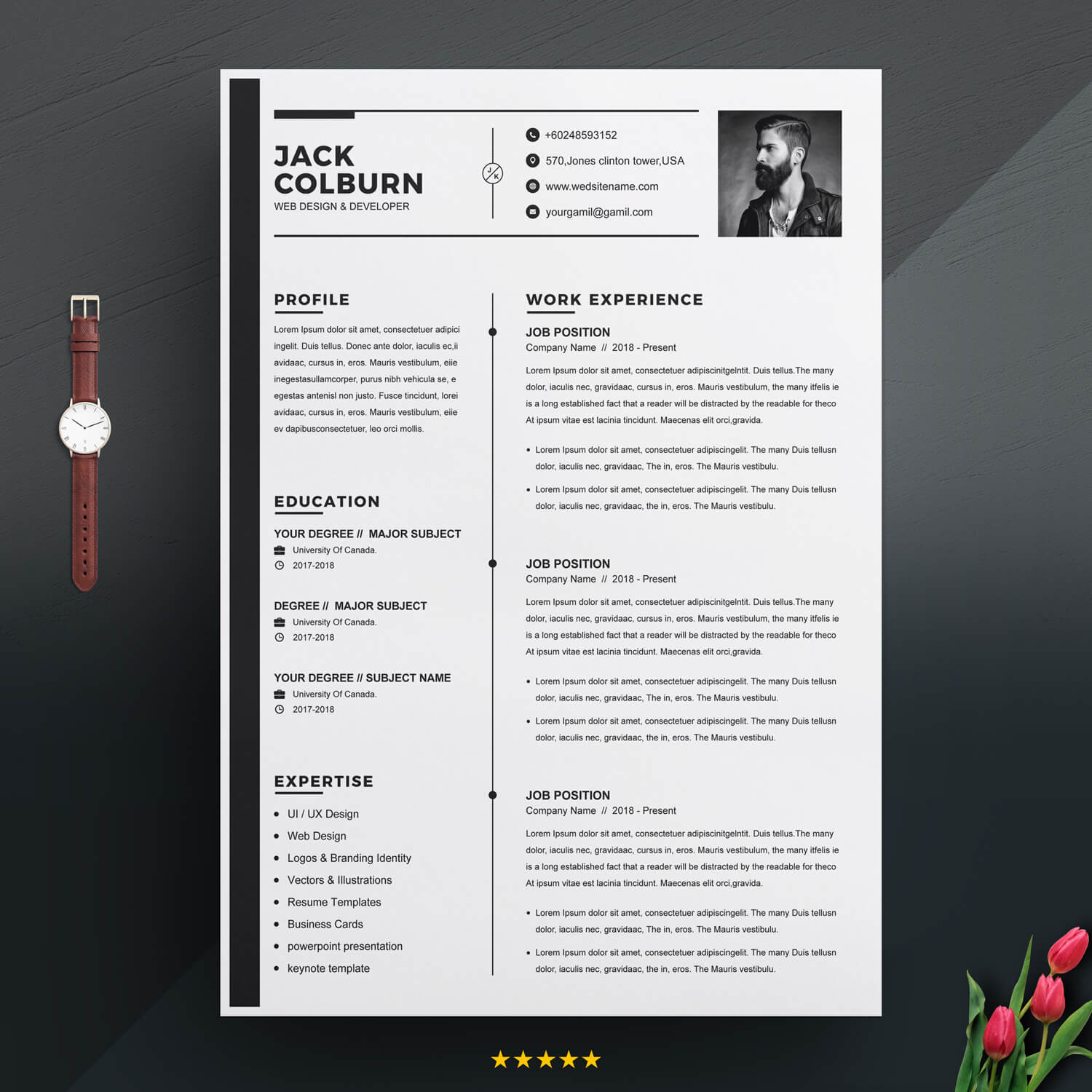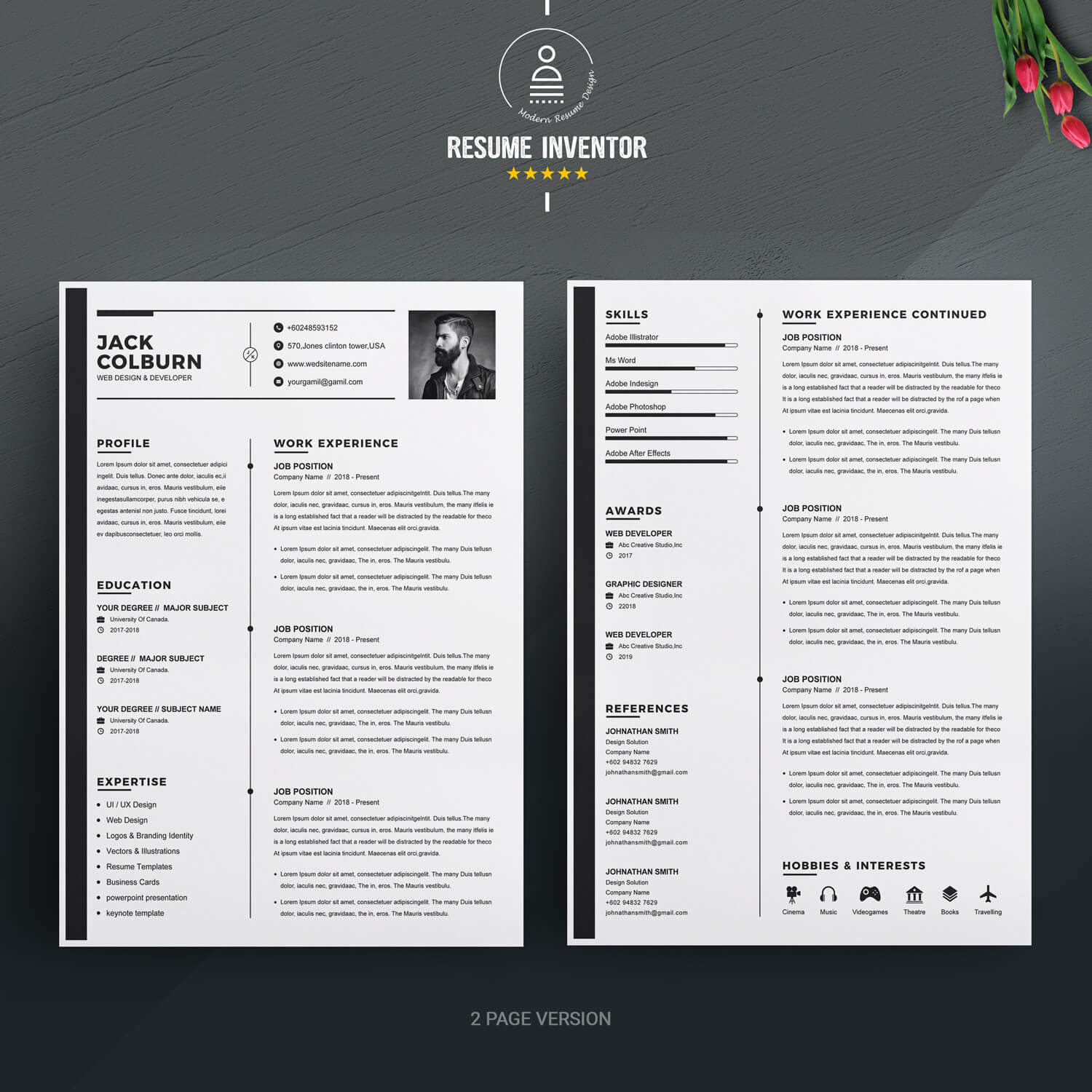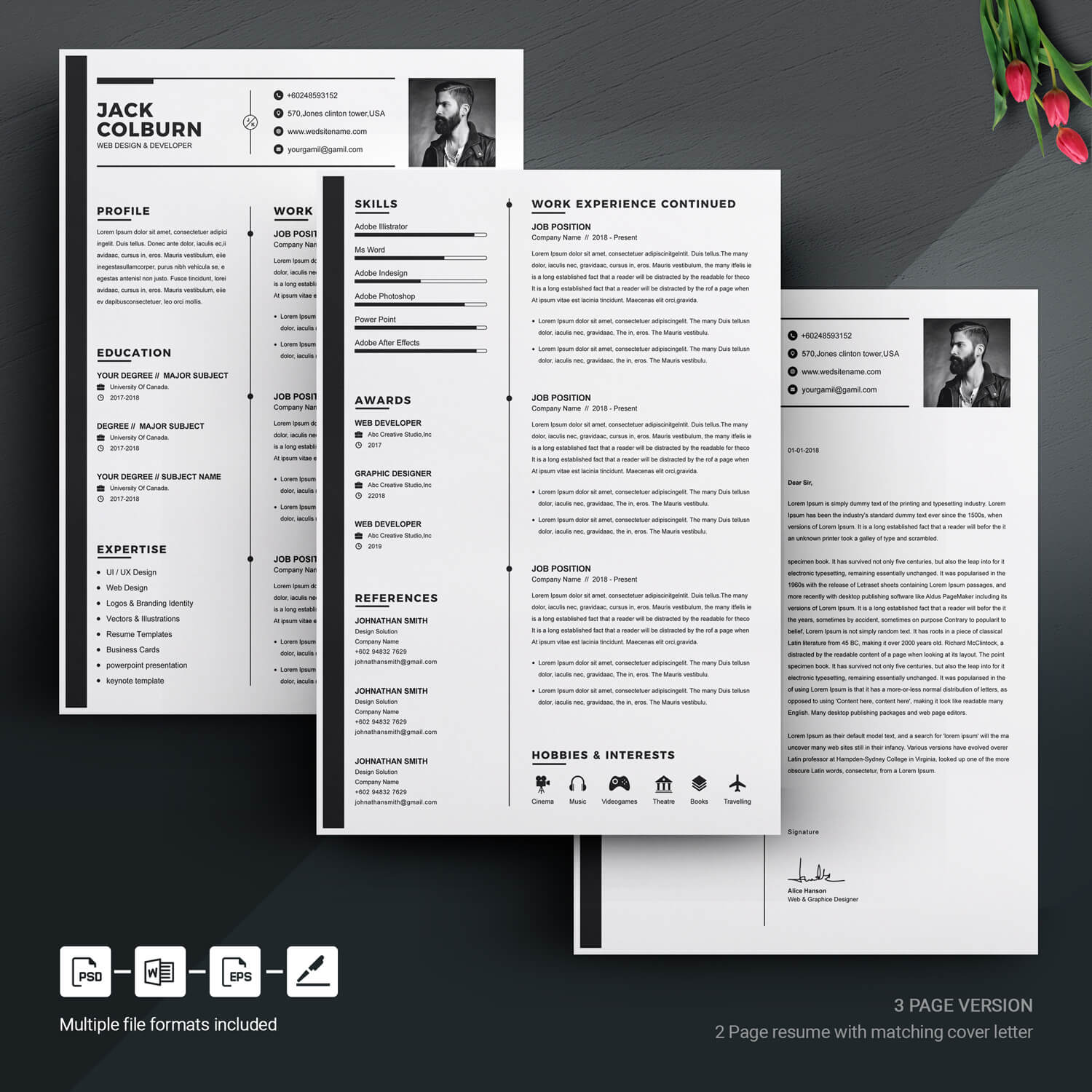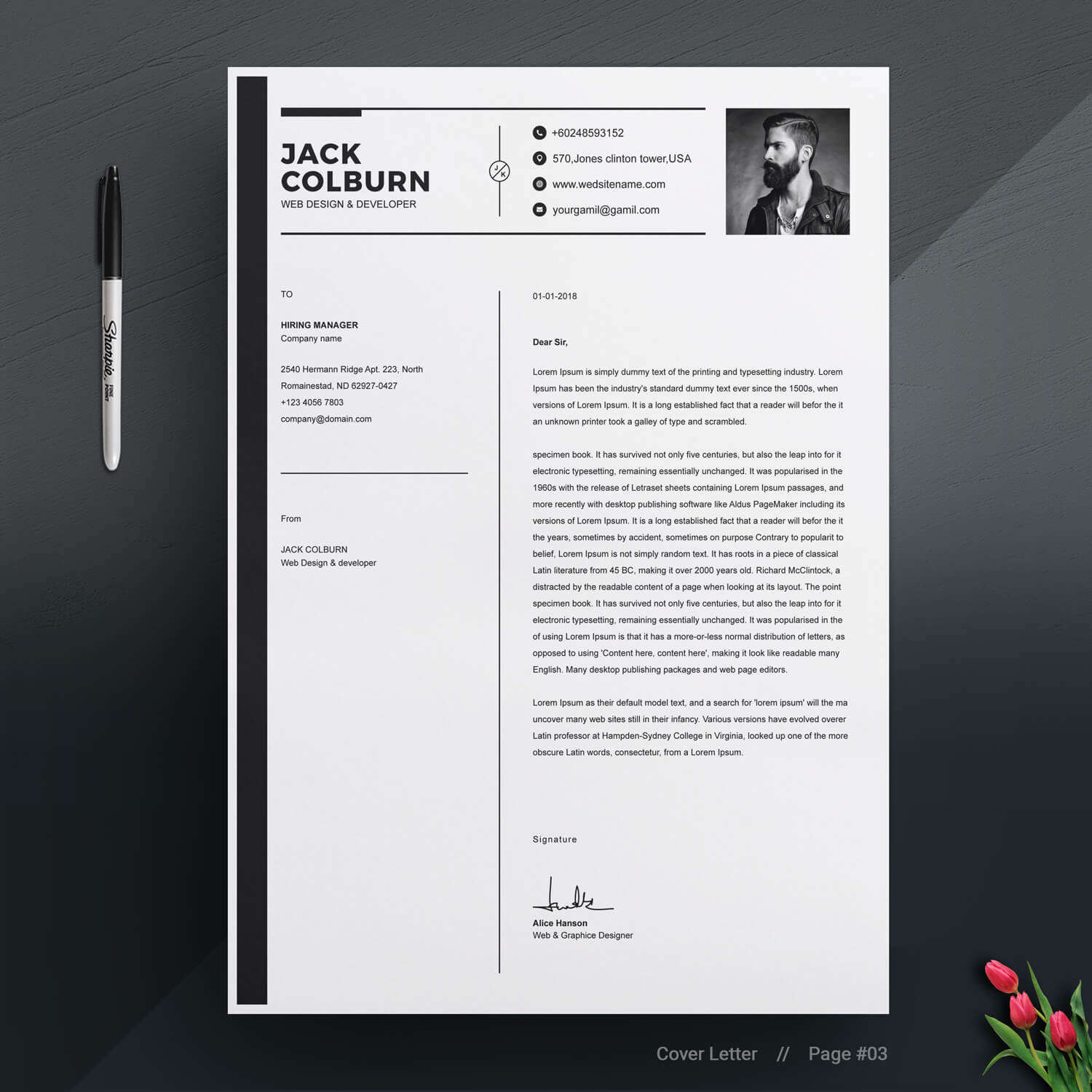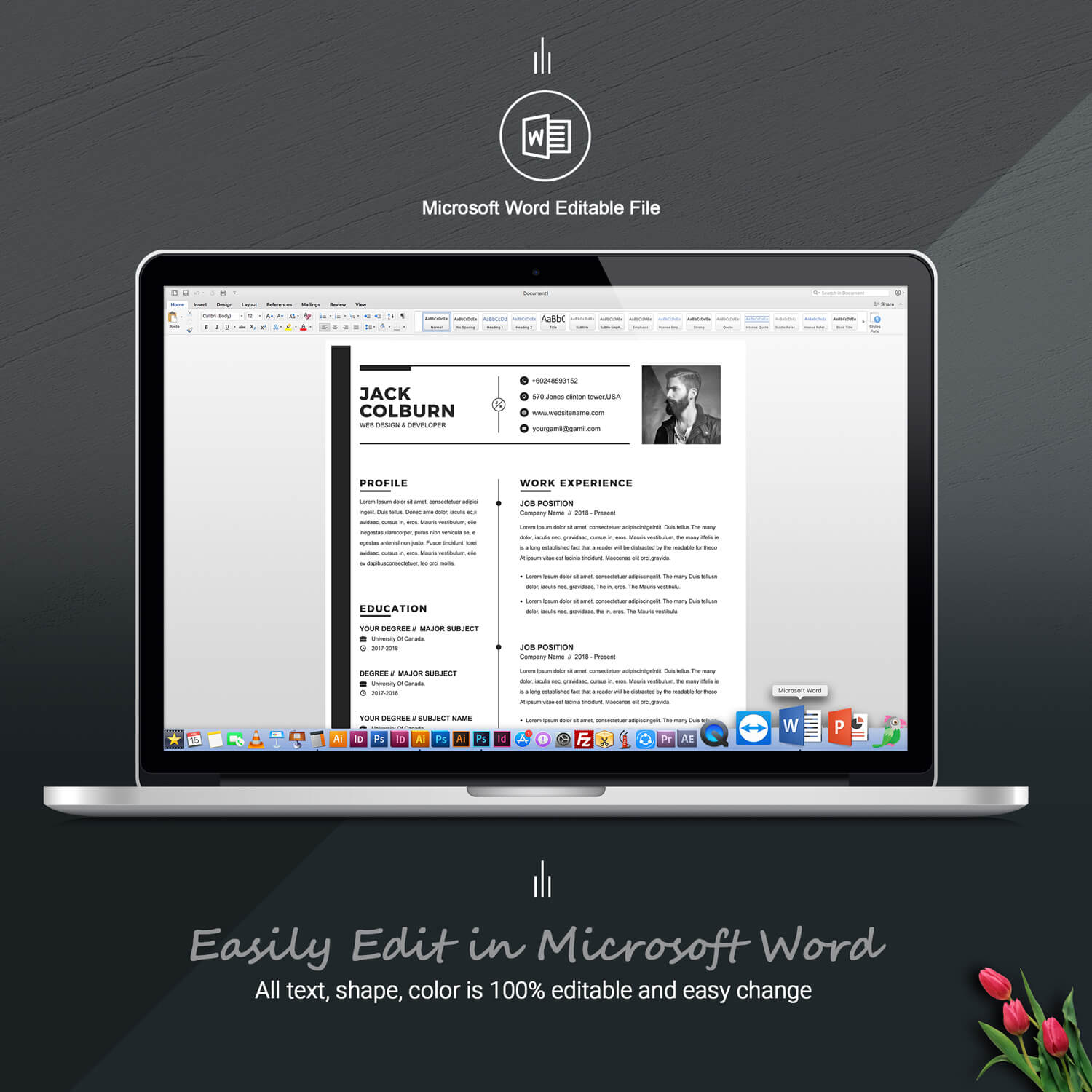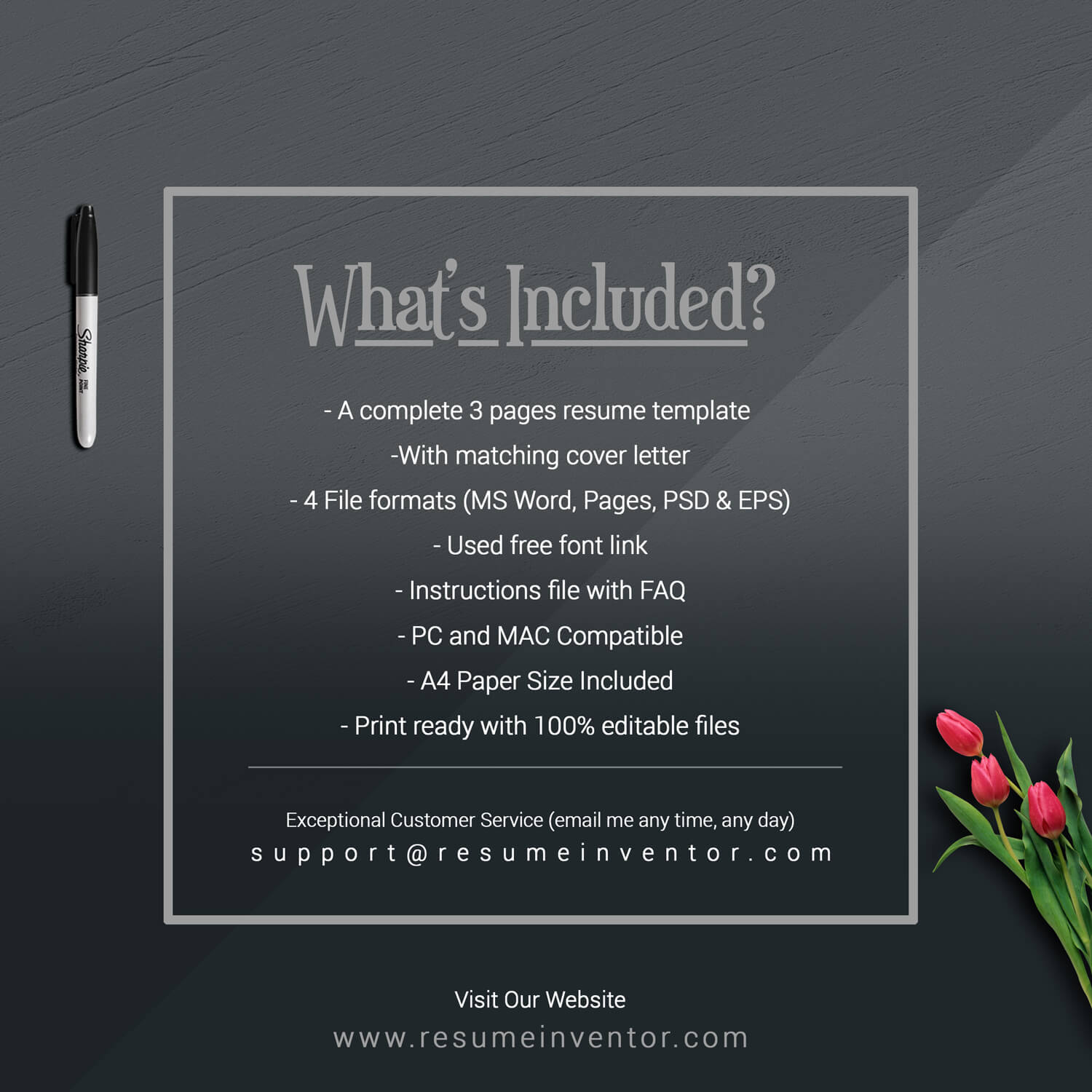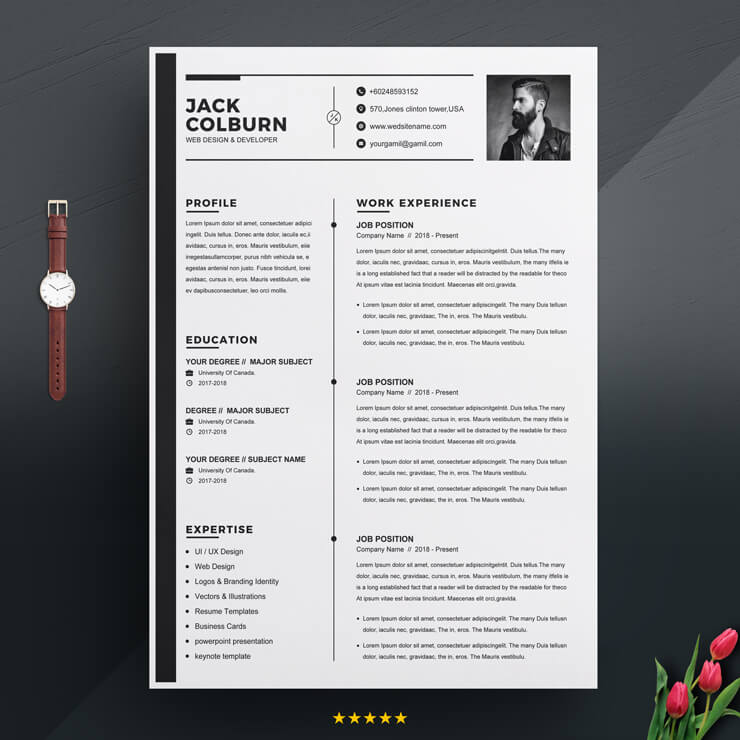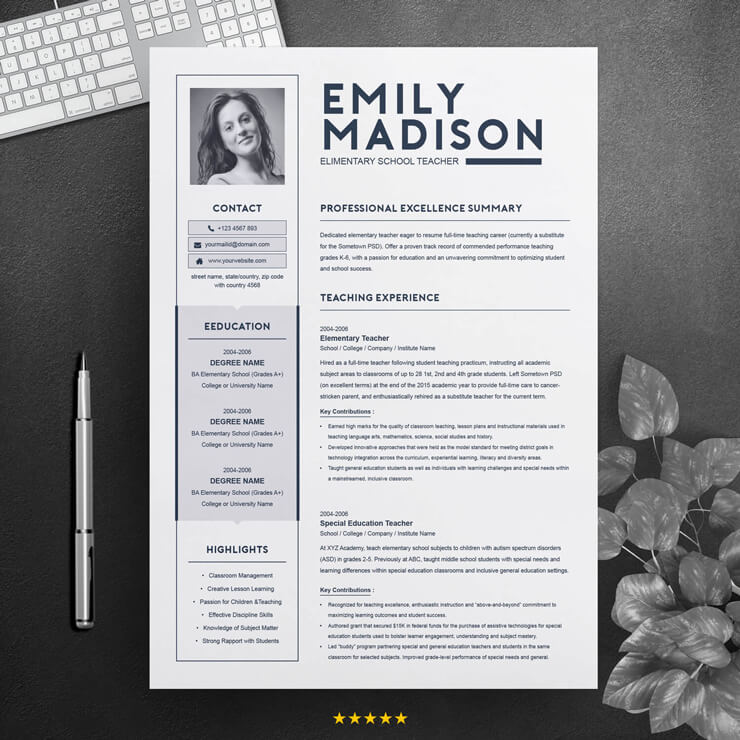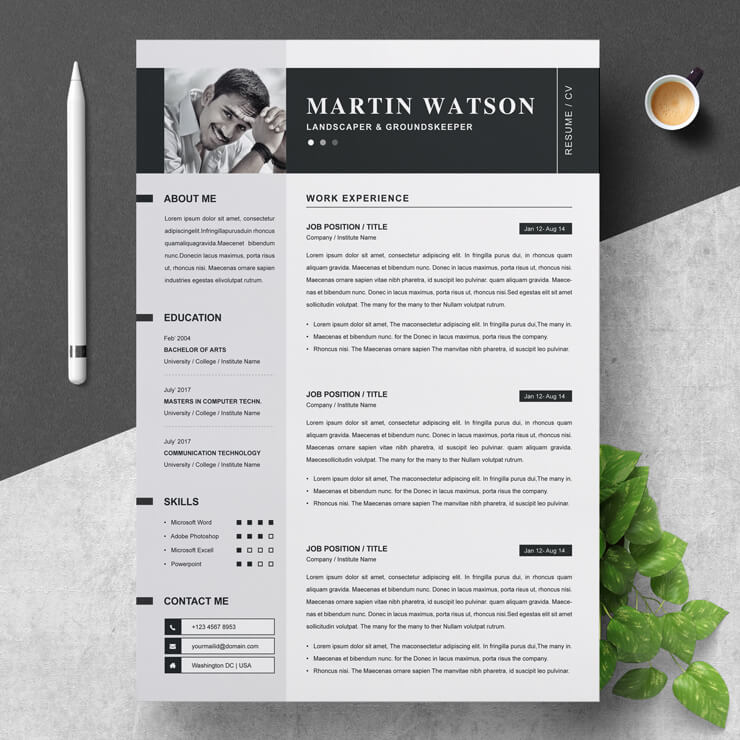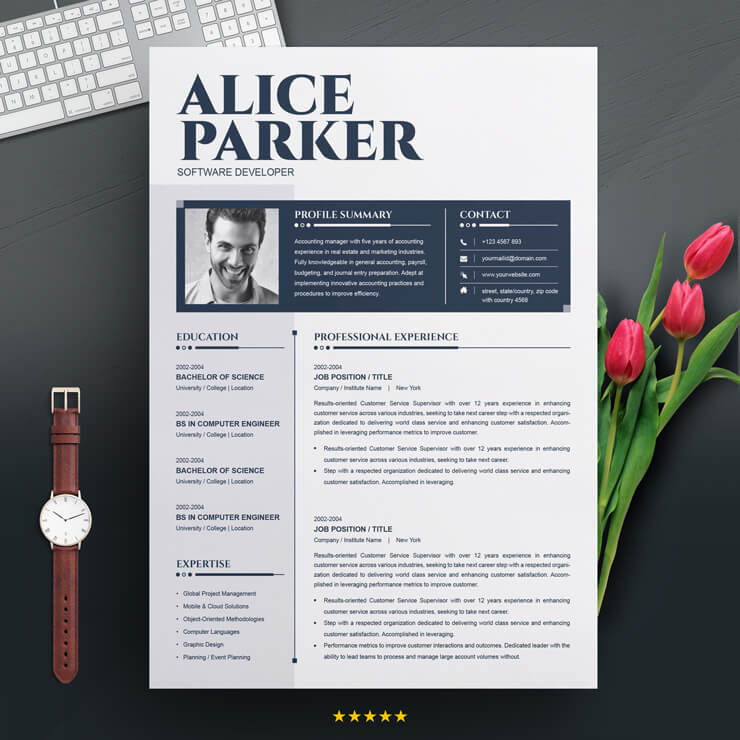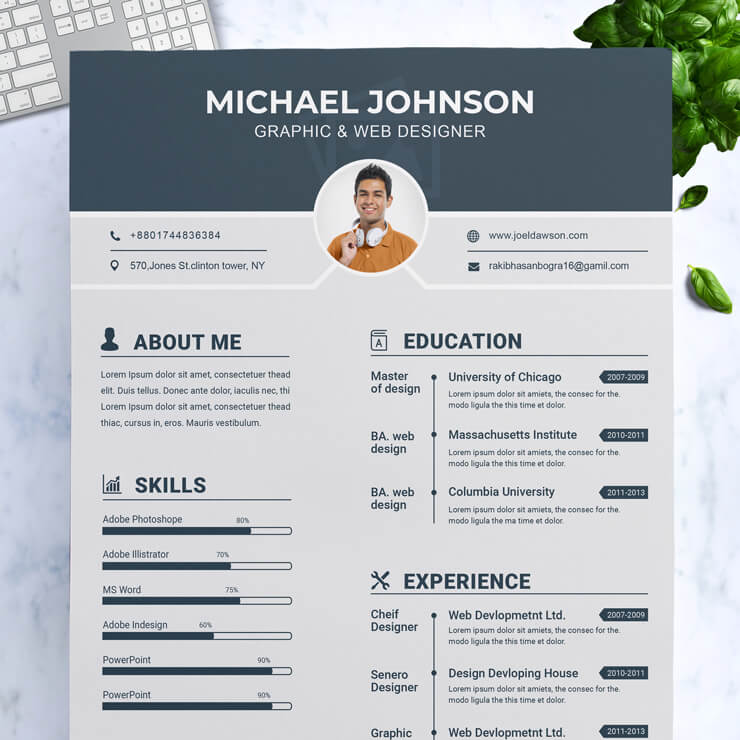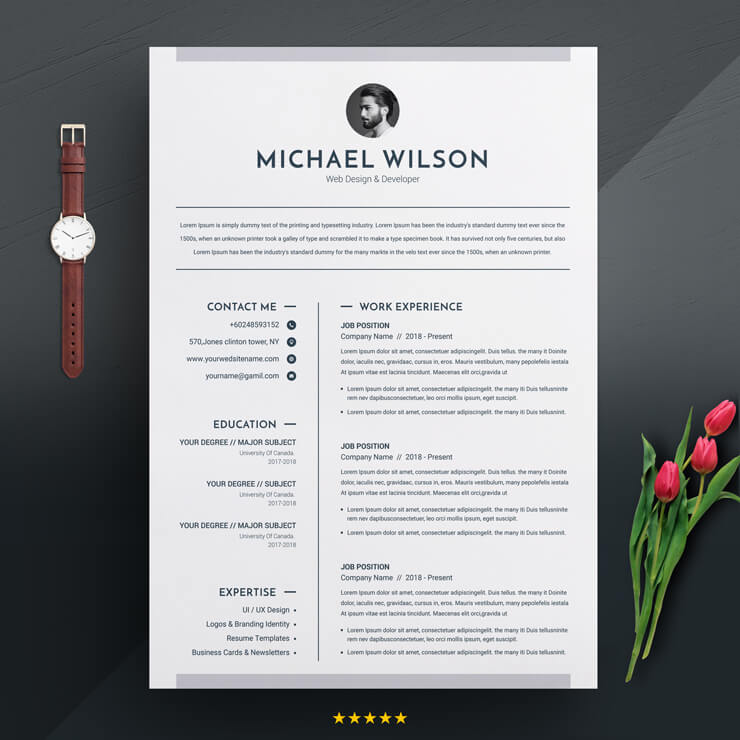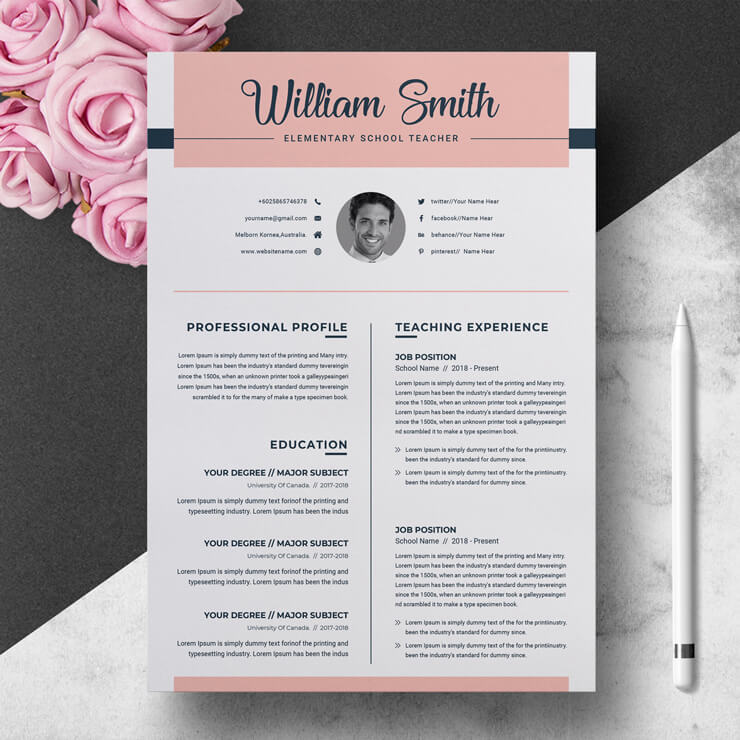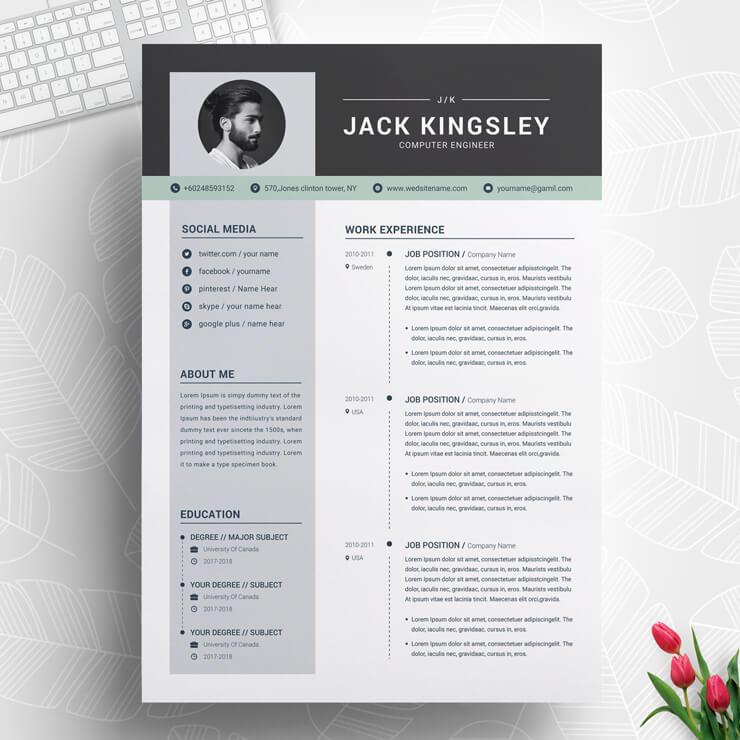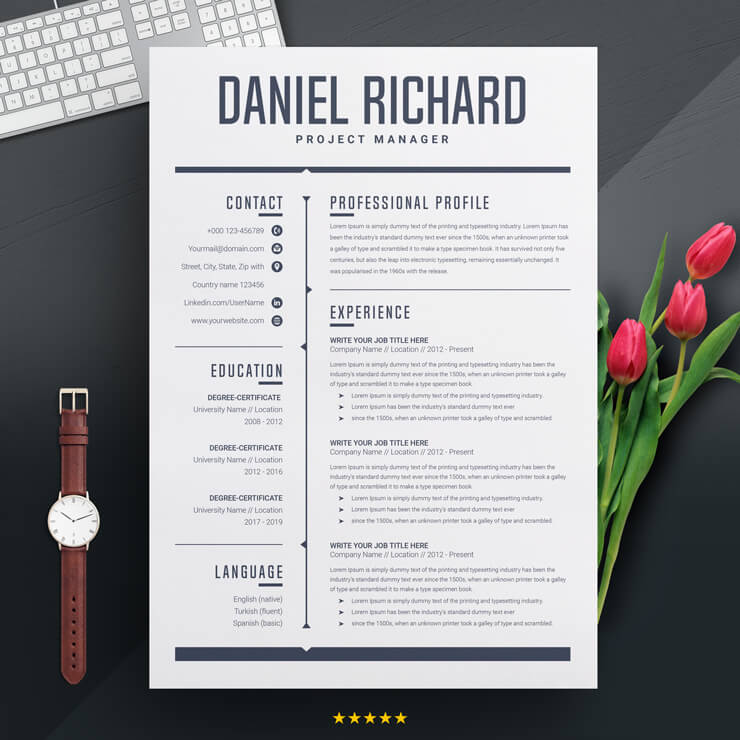UI UX Designer Resume Template [Example, Sample & Guideline]
The UI UX Designer Resume Template is a professionally designed document for individuals in UI/UX design. This professionally created template displays your user experience and user interface design skills. This template simplifies readability and organization with areas for your summary, work experience, abilities, and education. Wireframing, prototyping, usability testing, and design thinking are included in this keyword-optimized list.
It includes a matching cover letter template for a cohesive presentation. The template saves time and effort, helping job seekers stand out in a competitive market.
What Is a UI UX Designer?
A UI UX designer is responsible for developing user experiences for digital tools such as websites and mobile applications. They identify opportunities to improve user journeys and ensure desired outcomes. Working with product managers and engineers, they gather user requirements and create wireframes, designs, and prototypes. They design UI elements like menus, search boxes, and widgets.
Additionally, they test and optimize elements such as CTAs, banners, layouts, and page flows. Designers of the user interface and user experience (UI UX) are a key part of making digital goods more satisfying and interesting to use.
What Does a UI UX Designer Do? (Duties and Responsibilities)
As a UI UX designer, your responsibilities may vary depending on the organization and project requirements. However, there are several core duties commonly associated with this role:
- User Research: Conduct user research to understand user needs, preferences, and behaviors. This involves gathering insights through interviews, surveys, and usability testing to inform design decisions.
Example: Conducting user interviews to identify pain points and gather feedback on the user interface of a mobile banking app. - Wireframing and Prototyping: Creating low-fidelity wireframes and interactive prototypes to visualize the layout, navigation, and functionality of digital products. This helps in testing and iterating design ideas before final implementation.
Example: Using tools like Sketch or Figma to create wireframes and InVision or Adobe XD to develop interactive prototypes for a web-based e-commerce platform. - Visual Design: Designing visually appealing user interfaces by selecting appropriate color schemes, typography, icons, and other visual elements. UI UX designers ensure consistency in design elements and create visually engaging experiences.
Example: Designing a modern and sleek user interface for a mobile fitness application, including the selection of vibrant colors, legible fonts, and intuitive iconography. - Usability Testing: Conduct usability tests with target users to evaluate the effectiveness and usability of digital products. UI UX designers analyze feedback and iterate on designs to improve user experience.
Example: Observing users’ interactions with a website’s checkout process to identify any usability issues and propose design enhancements. - Collaboration: Collaborating with cross-functional teams, such as product managers, developers, and other designers, to align design goals and ensure seamless integration of the user interface with the overall product development process.
Example: Participating in design sprints and working closely with developers to implement designs and address any technical constraints.
What Are Some Key Sections To Include In A UI UX Designer Resume?
To create a comprehensive UI UX designer resume, make sure to include the following key sections:
- Contact Information: Clearly list your full name, professional title, phone number, email address, and relevant social media profiles (if applicable).
- Summary/Objective Statement: Provide a brief overview of your experience, skills, and career goals. Tailor this section to the specific position you’re applying for, emphasizing your UI UX design expertise and what sets you apart.
Example: A highly skilled UI UX designer with a passion for creating intuitive and visually appealing user interfaces. Experienced in user research, wireframing, prototyping, and collaborating with cross-functional teams. Dedicated to delivering exceptional user experiences that drive customer satisfaction and product success. - Professional Experience: Detail your previous work experience, highlighting your UI UX design roles, responsibilities, and notable achievements. Include the company name, job title, employment dates, and a description of your key contributions.
Example: UI UX Designer, ABC Tech Company, January 2021 – Present- Performed user research and usability tests to guide the revamp of a mobile app, leading to a 25% boost in user engagement.
- Collaborated with the development team to implement design solutions and ensure pixel-perfect execution.
- Education: List your educational background, including relevant degrees, certifications, and courses related to UI UX design. Include the institution name, degree/certification earned, and graduation/completion date.
Example: Bachelor of Fine Arts in Interaction Design, XYZ University, May 2019 - Skills: Create a dedicated section to highlight your technical skills, design tools proficiency, and any additional relevant skills that are essential for UI UX design.
Example: Skills: User Research, Wireframing, Prototyping, Sketch, InVision, Adobe XD, Visual Design, Interaction Design, HTML, CSS, Problem Solving, Collaboration. - Projects/Portfolio: If applicable, provide a link to your online portfolio or showcase specific projects that demonstrate your UI UX design skills and achievements. Include brief descriptions of the projects and your role in each.
Example: View my portfolio: (Insert your portfolio link here.)
Dos and Don’ts in UI UX Designer Resume
To make your UI UX designer resume stand out and effectively communicate your skills and experience, consider the following dos and don’ts:
Dos:
- Tailor your resume to each role.
- Incorporate quantitative data to showcase impact.
- Use a clear and concise resume header.
- Include a summary highlighting skills and experience.
- Showcase work experience and relevant projects.
- Pay attention to visual presentation.
- Proofread for errors.
Don’ts:
- Avoid unnecessary personal information and lengthy details.
- Use bullet points for readability.
- Check for spelling and grammar mistakes.
- Seek feedback to catch generic errors.
- Avoid basic mistakes like misspellings and poor formatting.
- Structure resume with clear sections.
Design and Formatting Tips
To avoid common pitfalls and make your UI UX designer resume more effective, steer clear of the following mistakes:
- Customize your resume: Tailor your resume for each role by removing irrelevant information and rephrasing bullet points to highlight key skills and experiences that align with the job requirements.
- Incorporate quantitative data: Include specific metrics or data that demonstrate the impact of your designs. For example, mention the percentage increase in user engagement or conversion rates resulting from your UI UX work.
- Clear and concise resume header: Use a clean and well-organized resume header that includes your contact information and relevant links, such as your portfolio website or LinkedIn profile.
- Resume Summary: Write a compelling resume summary that showcases your skills, experience, and unique selling points. Highlight your expertise in UI UX design and what sets you apart from other candidates.
- Work experience and projects: Showcase your relevant work experience and any notable UX/UI projects you have completed. Provide concise descriptions of your roles, responsibilities, and achievements in each position.
- Creative design elements: Add subtle design elements to enhance the visual appeal of your resume. Experiment with fonts, consider adding a touch of color, and explore different layout options to make your resume visually appealing.
- Avoid over-designing: While it’s important to demonstrate your design skills, be cautious not to overdo the design elements. Keep the overall design clean, professional, and easy to read. Ensure that the design doesn’t overshadow the content.
- Proofread thoroughly: Avoid simple mistakes that can lead to your resume being quickly dismissed. Double-check for spelling errors, grammar mistakes, and formatting inconsistencies. Pay attention to details to maintain a professional impression.
FAQs
How to highlight soft skills in a UI UX designer resume?
To highlight soft skills in a UI UX designer resume, focus on describing your abilities related to collaboration, communication, problem-solving, and creativity. Provide specific examples of how you’ve applied these skills in previous projects or teamwork scenarios. Use action verbs and concise statements to demonstrate your proficiency in areas such as user research, wireframing, prototyping, and usability testing.
What is the role of a UI UX designer on a resume?
The role of a UI UX designer on a resume is to showcase your expertise in designing user-centered digital experiences. Highlight your skills in creating intuitive interfaces, conducting user research, developing wireframes and prototypes, and optimizing user journeys. Emphasize your ability to translate user needs into visually appealing and functional designs, and demonstrate how your work has positively impacted user engagement and satisfaction.
Is there any format for a UI/UX designer resume?
While there isn’t a specific format for a UI/UX designer resume, it’s important to prioritize clarity, readability, and visual appeal. Use a clean and organized layout, with clear sections for your summary, work experience, skills, and education. Consider incorporating visual elements such as icons or infographics to showcase your design skills. Tailor the format to suit your personal style and the specific job requirements.
What are some essential keywords for a UI UX designer resume?
Some essential keywords for a UI UX designer resume include: user experience design, user interface design, wireframing, prototyping, usability testing, interaction design, visual design, information architecture, user research, responsive design, design thinking, user-centered design, HTML/CSS, Adobe Creative Suite, and collaboration. Incorporate these keywords naturally throughout your resume to demonstrate your familiarity with industry-specific terminology and skills.
How long should a UI UX designer’s resume be?
A UI UX designer resume should ideally be one to two pages long, depending on your level of experience and the amount of relevant information you have to showcase. Prioritize the most significant and recent experiences, projects, and skills. Use concise and impactful language to highlight your accomplishments. Remember, hiring managers often skim resumes, so keep it focused, relevant, and easy to read.
INCLUDES:
- Cover Letter Template (can also use as a Thank You letter)
- Microsoft Word (.docx) files
- Apple Pages (.pages) files
- Photoshop (PSD) Files
- Illustrator (EPS) Files
- Detailed Instructions file
- A4 Paper Size Included
- Links to free fonts used
- 24/7 hours Fast and friendly customer service
Share Now!
